Want to add a lovely and simple-to-grow flower to your garden? See our selection of the top flowers beginning with the letter T. We have everything you need, from tulips to daisies!
Flowers That Start With T – List Of Flowers That Name Starts With the Letter ‘T’

Tagetes
About 50 species of annual herbs make up the Tagetes genus, which belongs to the Aster family (Asteraceae). They are indigenous to South America, tropical America, and southern North America. The term “marigold” also applies to unrelated plants from various families as well as the pot marigold (genus Calendula).
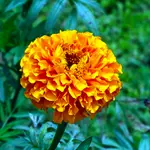
Beautiful yellow, orange, or red composite flowers that develop alone on the stalk or in clusters are the defining feature of the genus Tagetes. The leaves are frequently beautifully cut and placed in pairs on the stem’s opposite sides. On top of cup-shaped bracts, the flower heads are perched.
The Mexican marigold (Tagetes erecta), often known as the Aztec marigold, is a popular ornamental flower that is noted for its dense heads of orange or yellow blossoms. The Mexican marigold is an essential flower in Da de los Muertos celebrations in Mexico and around Latin America. It is frequently used in garden borders or as companion plants to ward off pests in vegetable gardens.
Tea Rose
Old-fashioned tea roses and hybrid everlasting roses are combined to create hybrid tea roses. Their huge, lofty buds and long, straight stems serve as distinguishing features.

The tall, pointed buds of the hybrid tea rose gently unfold. Instead of flower clusters, hybrid tea roses often only produce one blossom at the end of each stem and have an open habit. Nearly every hybrid tea rose blooms repeatedly throughout the growing season and has some smell.
Depending on the exact variety and the growth conditions, hybrid tea roses mature at a size between 3 and 8 feet tall after a few years of being planted. When they are still dormant, in the fall or early spring, is generally the optimum time to plant them.
Like many other cultivated flowers, hybrid tea roses are bud grafted onto robust, disease-resistant rootstock. They require slightly more particular care instructions than normal roses, but they nevertheless thrive in an environment with lots of sunlight and acidic soil. It’s crucial to adhere to a regular fertilisation schedule because these roses often benefit from fertilisation. Hybrid tea roses require a humid atmosphere to grow, as well as regular irrigation.
Thunbergia
A stunning group of flowering plants with a wide range of colours is called Thunbergia. They are most frequently seen in tropical areas of southern Asia, Madagascar, and Africa.
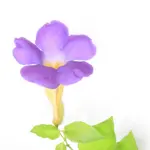
Most Thunbergia species are extremely robust annual or perennial vines and shrubs that can reach heights of 2 to 8 metres. Carl Peter Thunberg (1743–1828), a Swedish naturalist renowned for his fervour for botany and meticulous attention to detail, is honoured by the generic name of this plant.
Choose a Thunbergia plant if you’re seeking for a particular present for a special gardener in your life! Any gardener or anybody who simply enjoys the beauty of nature will be delighted by these lovely blooms.
While Thunbergia alata is more frequently referred to as black-eyed Susan vine or black-eyed Susan, Thunbergia grandiflora is more frequently called Thunbergia. Thunbergia gregorii is the scientific name for orange clockvine.
Tiger Flower
A genus of blooming plants with about 35 species is known as the tiger-flower (genus Tigridia), sometimes known as the shell flower. These plants, whose native range extends from Mexico to Chile, are well-known for their lovely blossoms. In fact, the Aztecs once valued the Mexican shell flower, a species of tiger flower, for the chestnut flavour of its bulb-like corms.

Beautiful annual plants called tiger-flowers sprout from corms or bulbs. The flowers feature three lower petals that alternate with three smaller petals, and they are typically a lovely orange-red colour. A speckled cup is present in the centre of each petal. A few sparse, sword-like leaves are interspersed with 60-centimeter (2-foot) stems that support the flowers.
Tiger Lily
The tiger lily, also known as Lilium lancifolium or Lilium tigrinum, is an attractive perennial with an exotic appearance that is also simple to grow. Tiger lily bulbs can be planted in the spring or fall, and they will bloom in the summer.
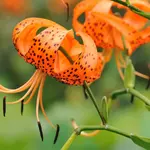
The blooms are particularly beautiful, with curled petals and dark markings, and the plants themselves have strappy leaves and long flowering stalks. The majority of tiger lilies are orange in colour, although there are also red and yellow variations.
The tiger lily is not only lovely but also holds a special significance. According to legend, the flower stands for royalty, pride, and prosperity. It’s crucial to remember that while the blooms are delicious, the pollen is poisonous to people. 1 Tiger lilies are also poisonous to cats but not to dogs or horses.
Tithonia
Tithonia’s distribution centre is in Mexico, but several species can also be found in Central America and the Southwestern United States. T. diversifolia and T.
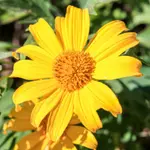
rotundifolia in particular are often farmed species that have escaped cultivation and spread to become weeds in tropical and subtropical regions all over the world. T. rotundifolia is a lovely fresh cut flower that blooms in the Northern Hemisphere from mid- to late summer.
The fistulose peduncle is the genus’ most distinctive characteristic (hollow and flaring toward the apex). One species, T. koelzii, is a small tree, and the other species are coarse annual or perennial herbs or shrubs.
Trachelium
The stunning flowering plant Trachelium caeruleum, also referred to as blue throatwort, is indigenous to the Mediterranean region.
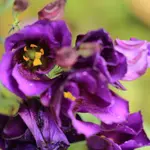
This plant is found in Sicily, Algeria, Morocco, Portugal, and Spain. Other places, including New Zealand, the Azores, and portions of continental Europe, have also allowed it to become naturalized.
Trillium
Trillium is a genus of about 25 perennial herbs that bloom in the spring and is also known as wakerobin or birthroot. They are indigenous to Asia and North America and are a member of the Melanthiaceae family. In gardens with wildflowers, many varieties of trillium are grown.
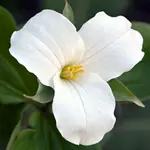
Oval bracts on trillium plants have the appearance and function of leaves. They grow from an underground rhizome and are carried at the top of stems or on the ground in whorls of three.
The sepals, petals, stamens, and stigmas of flowers are all arranged in groups of three. Each single flower, which can be white, greenish white, yellow, pink, or purple, rests directly on the bracts or is carried above them on a slender stalk.
Triteleia
Triplet lilies are a wonderful source of colour and blossoms in the late spring or early summer. They may easily grow in many different sections of the country despite being native to the Northwest of the country. After planting plants, triteleia require very little maintenance. What you need to know about growing a triplet lily is provided here.
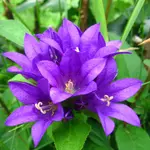
Triplet lilies, often called “Pretty Face” or “Wild Hyacinth,” are perennial plants with a range of hues, including light blue, lavender, and white. With the right care, these blooms can give a dash of colour to any landscape and will stay for two to three weeks.
Tritonia crocata
An stunning plant with bright orange or reddish orange flower sprays and a fan of short, lance-shaped leaves, Tritonia crocata blooms in the late spring and early summer.
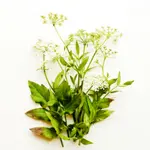
It reproduces by producing cormlets, which are flattened corms enclosed by a few layers of fibrous outer tunics. All of the tepals have lovely small translucent zones or “windows” on the edges, with the exception of the three bottom tepals, which have a narrow yellow or dark red central stripe in the neck.